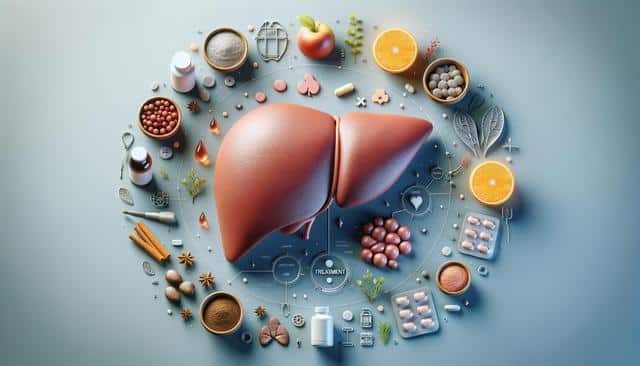
How to Heal the Liver: Identifying and Treating Fatty Liver Disease
Understanding Fatty Liver Disease
Fatty liver disease, or hepatic steatosis, is a condition where excess fat accumulates in the liver. While often associated with heavy alcohol use, a growing number of cases are classified as non-alcoholic fatty liver disease (NAFLD), which is linked to obesity, insulin resistance, and poor dietary habits. NAFLD can progress to more serious liver conditions, including non-alcoholic steatohepatitis (NASH), cirrhosis, and even liver cancer if left untreated. Recognizing the condition early is essential to prevent long-term damage and improve liver health. Common symptoms include fatigue, mild abdominal discomfort, and in some cases, no noticeable symptoms at all until the condition has advanced.
Causes and Risk Factors
Fatty liver disease may result from a variety of factors, many of which are lifestyle-related. Understanding these contributors is the first step in crafting effective Fatty Liver Treatments. Some of the primary causes and risk factors include:
- Obesity and excess abdominal fat
- Type 2 diabetes or prediabetes
- High cholesterol or triglyceride levels
- Poor nutrition, including high intake of sugar and processed foods
- Rapid weight loss or malnutrition
- Genetic predisposition
While some of these risks are beyond personal control, many can be managed through informed lifestyle changes and medical guidance. Knowing your personal risk level can encourage early screening and preventative strategies.
Diagnostic Methods
Diagnosing fatty liver disease typically begins with a routine blood test that reveals elevated liver enzymes. However, this is not definitive, and further testing is often necessary. Healthcare providers may use imaging tools such as ultrasound, CT scans, or MRI to assess fat accumulation in the liver. In some cases, a liver biopsy may be required to determine the extent of liver damage. Regular check-ups and communication with your healthcare provider are key to early detection. If you fall into high-risk categories, discussing screening options can be a proactive step in managing your health.
Effective Fatty Liver Treatments
There are no specific medications approved solely for treating fatty liver disease, but several effective strategies can halt or reverse its progression. The most recommended Fatty Liver Treatments focus on lifestyle adjustments, including:
- Weight loss through gradual and consistent changes
- Adopting a balanced diet rich in vegetables, lean proteins, and whole grains
- Limiting sugars, refined carbohydrates, and saturated fats
- Engaging in regular physical activity, such as walking, cycling, or swimming
- Controlling blood sugar and cholesterol levels
In more severe cases, physicians may prescribe medications to manage associated conditions like diabetes or high cholesterol. Ongoing monitoring and adjustments to treatment plans are essential for long-term success.
Preventing Further Liver Damage
Preventing fatty liver disease from advancing requires a holistic approach to health and wellness. Even if the disease is in its early stages, consistent care and attention to lifestyle choices can make a significant difference. Key strategies include:
- Reducing alcohol consumption or eliminating it entirely
- Maintaining a healthy weight and avoiding yo-yo dieting
- Regularly monitoring liver function through blood tests
- Managing stress, which can indirectly affect dietary and lifestyle choices
- Staying informed about new research and treatment options
Support from healthcare providers, nutritionists, and even community groups can also reinforce long-term behavioral changes. The sooner treatment begins, the more manageable the condition becomes, reducing the risk of further complications.
Conclusion
Fatty liver disease is a widespread but often overlooked condition that affects a significant portion of the adult population. Recognizing the symptoms, assessing personal risk factors, and adopting targeted Fatty Liver Treatments can greatly improve liver health and overall well-being. While there is no one-size-fits-all solution, a combination of medical guidance and sustainable lifestyle changes offers the most effective path forward. By staying informed and proactive, individuals can take meaningful steps toward healing their liver and preventing future complications.


